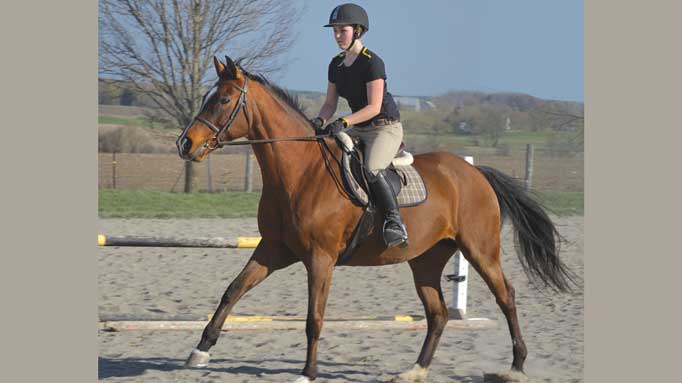When a horse changes its lead on the approach to a jump, or off the ground at take-off, it is commonly referred to as a “swap.” Most often occurring on the long diagonal approach to a single fence, there are several reasons why a horse can be predisposed to suddenly change leads.
Here, Lindy Townley shares her tips for understanding this unwanted action.
A horse who changes leads consistently off the ground, on the short sides of the ring, or on the way to a fence is most often experiencing some type of discomfort. You can establish that it is a unsoundness or discomfort by paying close attention to whether the horse is changing leads consistently to a favoured lead. Diagnosing this issue can require any number of professional opinions, from the veterinarian to the chiropractor.
If you’ve eliminated discomfort or unsoundness, it would be worthwhile to look at the rider. Pay attention to whether or not the horse swaps with all or just a particular rider. Often without realizing, a rider will shift their weight laterally, lean off to the side, or shift their weight on takeoff. I like to think of it as “tipping the canoe,” because the horse will step or shift under your weight to maintain balance.
I actually caution against working without stirrups to establish a balanced base of support, because if a rider doesn’t have an evenly-distributed seat to begin with, taking away stirrups tends to encourage them to fall over the inside shoulder and even grab at the mouth. Look to see if the horse is changing off the correct lead in both directions, in which case you may simply have a problem with a horse that isn’t able to stay straight.
I’ve found the only solution to helping a horse stay straight and a rider to stay balanced is to work on the counter-canter. This encourages the horse to stay responsive to the aids and helps both horse and rider stay balanced. With counter-canter work, the horse will eventually learn to balance itself enough to be able to hold the lead correctly. Work on some counter-canter on the flat, then over poles, and make sure the horse holds the counter lead. Really insist on straightness. There is a tendency for riders to over-bend to the outside when working on the counter-canter, but remember that this is an exercise in keeping the horse between both hands and legs – an exercise in straightness.

